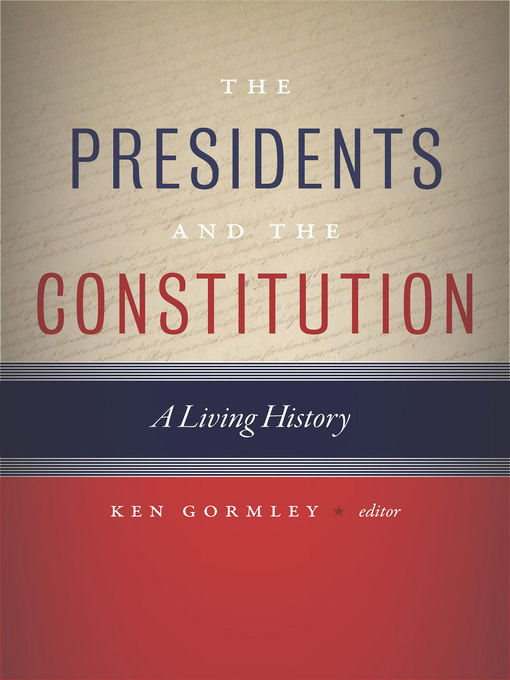
The Presidents and the Constitution
A Living History
کتاب های مرتبط
- اطلاعات
- نقد و بررسی
- دیدگاه کاربران
نقد و بررسی

April 15, 2016
Gormley (president, Duquesne Univ., PA; The Death of American Virtue) has assembled a first-rate group of scholars of the American presidency to make sense of what he refers to as "an unfinished presidency." This chronicle of U.S. leaders from George Washington to Barack Obama reminds readers that we often have an imperfect vision when it comes to comprehending the principles, powers, possibilities, and perils involved in serving as commander in chief. Each president has helped to shape and in turn has been shaped by this distinct, somewhat ill-defined office; in particular, each has helped define constitutional policy, for better or worse; examples given include Thomas Jefferson and the Louisiana Purchase, Abraham Lincoln and the Civil War, Franklin D. Roosevelt and the Great Depression and World War II, and Richard Nixon and Watergate. In the end, the contributors argue that the relationship between the presidency and the Constitution is uneven, demonstrating the glory and gore of political constitutional development. VERDICT This book deserves close scrutiny by any student of the U.S. presidency and political development.--Stephen Kent Shaw, Northwest Nazarene Coll., Nampa, ID
Copyright 2016 Library Journal, LLC Used with permission.

March 15, 2016
A fluidly fashioned collection of essays about how the roster of American presidents shaped the executive duties as defined in the Constitution. Editor Gormley (Dean, Duquesne Univ. School of Law; The Death of American Virtue: Clinton vs. Starr, 2010, etc.) assembles an evenhanded consideration of each president's operating style and effectiveness, from George Washington to Barack Obama. Each executive has had to assume the constitutional duties of the office: serving as the commander in chief of the Army and Navy, appointing ambassadors and judges, granting reprieves and pardons, delivering the State of the Union address to Congress, and vetoing legislation. Yet the Constitution is maddeningly vague on specifics and even, as Gormley notes in his crisp introduction, seems to assume "that the president and Congress will have to duke it out, battling over the parameters of their respective powers," as most evident in the current political climate under President Obama. Precedent has established the strictures of the office, starting with Washington's keen sense of caution in respecting the separation of powers (he only used the veto twice) and in exercising executive restraint; he stepped down after two terms in order to avoid the appearance of a long-reigning monarch. Yet these precedents were exploded during the four terms of Franklin Roosevelt, who expanded emergency executive powers during extraordinary "times of war and hysteria." James Monroe's historic Monroe Doctrine (1823) first set the principles that guided foreign policy in the Western Hemisphere, while the death in office of William Henry Harrison forced the determination of succession from then on. Each scholarly essayist--all of whom provide extensive notes at the conclusion of each chapter--pinpoints a defining presidential moment, from the Emancipation Proclamation of Abraham Lincoln to Watergate and the presidential pardon of Richard Nixon to the navigation of war powers under both of the Bush administrations. A useful, educational tome featuring top-drawer contributors--though female scholars are woefully underrepresented.
COPYRIGHT(2016) Kirkus Reviews, ALL RIGHTS RESERVED.

























دیدگاه کاربران